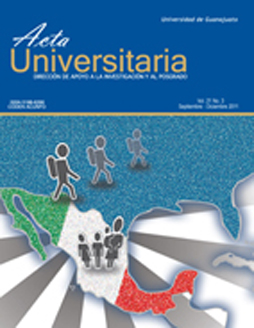Publicado 2011-12-15
Palabras clave
- quitina,
- quitosana,
- quitinasas,
- quitosanasas,
- quito-oligosacáridos
- chitin,
- chitosan,
- chitinases,
- chitosanases,
- chitin-oligosaccharides.
Cómo citar
Resumen
Las quitinasas sintetizadas por plantas, hongos, insectos y bacterias tienen un gran potencial debido a su amplio espectro de aplicaciones. En este trabajo revisamos generalidades sobre las quitinasas y quitosanasas bacterianas y su uso en la producción de quito-oligosacáridos. Este tipo de biomoléculas han creado un mercado biotecnológico diversificado e ilimitado que incluye aplicaciones en alimentos como aditivos y bioconservadores, asimismo en múltiples aplicaciones biomédicas enfocadas a la actividad anti-tumoral, a la capacidad como agentes antioxidantes y como antidiabéticos. Además, en la agricultura se han aplicado como factores de nodulación, como agentes osmoprotectores y antioxidantes para beneficiar el crecimiento de cultivos. Es importante destacar el potencial de las quitinasas sintetizadas por Bacillus thuringiensis, el bioinsecticida mas importante mundialmente. Las quitinasas de B. thuringiensis se han empleado recientemente para generar quito-oligosacáridos que tienen actividad antimicrobiana, particularmente contra diversas bacterias patógenas de importancia en salud pública transmitidas por alimentos.

